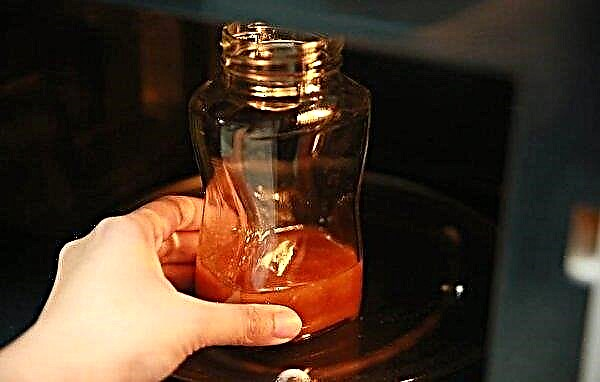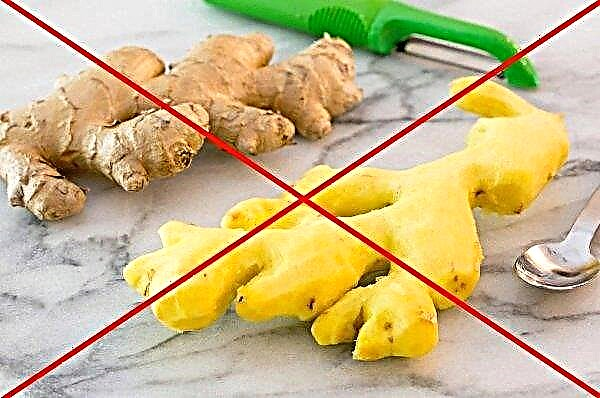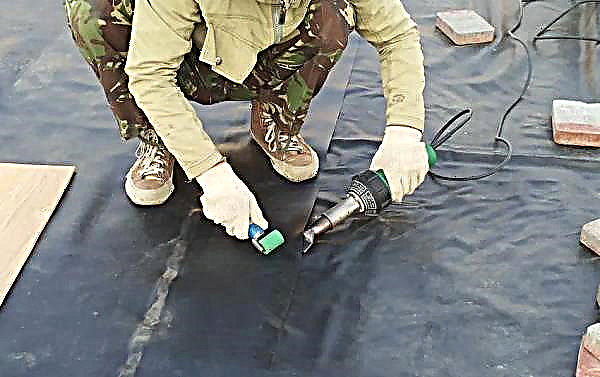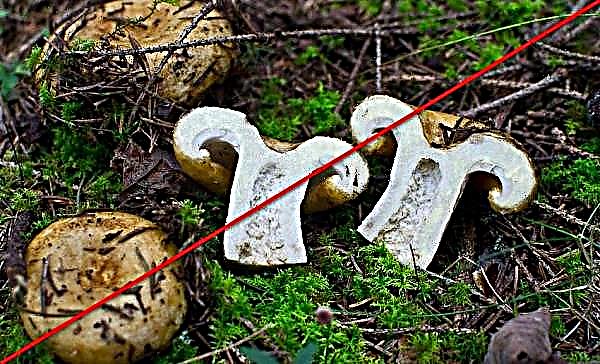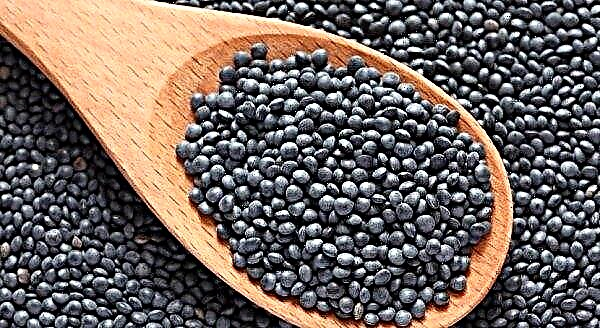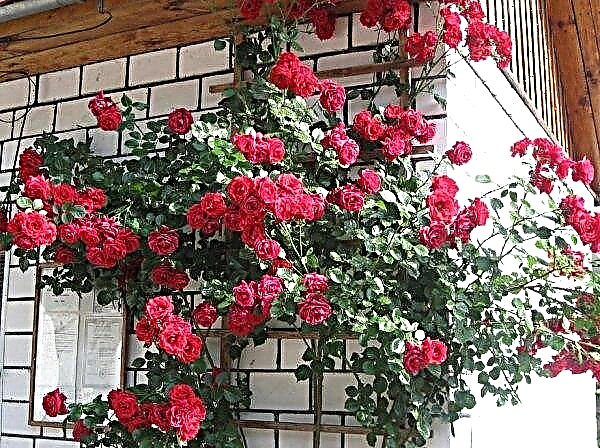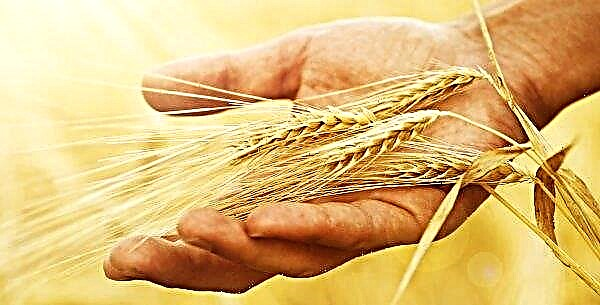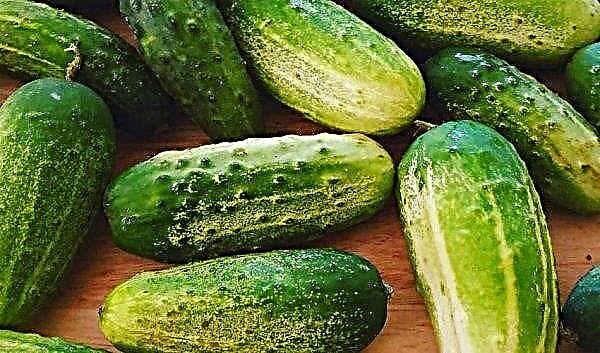Onion is a very popular and healthy culture. Among the many varieties, those that have a delicate taste and do not make you cry when sliced are especially appreciated. One of these varieties is Exibishen.
Description and characteristics of the variety
This onion is simply the record holder in size among its counterparts. The weight of one bulb ranges from 500 to 900 g. This giant was bred in the Netherlands. The excibishen turnips are slightly oblong, they are light yellow and smooth. Their husks are thin and tight-fitting. In terms of ripening, the variety can be attributed to late - the growing season is 80 days. Under favorable conditions, for one season this variety gives a yield of up to 300 kg per 1 hundredth.
Photo gallery
Pros and cons of the variety
- Grade advantages:
- lack of an unpleasant smell;
- does not cause tears during slicing;
- sweet taste, without bitterness and pungency;
- juicy and dense fruits;
- can be grown on both feather and turnip;
- It is grown both in the winter way and in the spring.
Did you know? Scientists have proved that the smell of onions, tears when sliced and their use in food help the body overcome the formation of cancer cells.
The minuses of the variety include a short shelf life of only 4 months. After this period, he loses his qualities and spoils.
Exibishen cultivation of onions at home
This salad variety is not difficult to grow at home, if you follow the rules of agricultural technology.
Optimum seeding time
This variety is heat-loving, so the timing of sowing depends on the climatic zone. If we talk about landing in open ground, then this will be the end of April. If this will be seedling cultivation, then seeds are sown in early March.

Growing conditions
Like the rest of the onion family, Exibishe loves warmth and moderate humidity. Seeds are sown in the ground when the air temperature warms up not lower than + 15 ° С. Do it on a clear, warm day. While the onions are still young, the excess of moisture is not terrible for him, he will only gain strength. But when the turnip ripens, then moisture is no longer needed, otherwise the fruits will begin to rot. That is why it is impossible to postpone sowing later than on the first days of May, so that the vegetable has time to ripen before the August cold nights and the beginning of rains.
Soil requirements
When choosing soil, the main thing is that it be nutritious and not acidic. It can be peat with humus and mineral fertilizer or turf land, mullein and humus in a ratio of 10: 1: 9.
Important! Good drainage should be done to prevent stagnation of water. Sand is used as drainage in an open area.
Preparing planting material
The preparation of the material depends on whether it will be seeds or seeds. If the sowing is seed, then you need to pay attention to the timing of packaging. Older than two years, the seeds will not germinate. First, they are soaked in warm water, then wrapped with a damp cloth and left for 48 hours.  Then another 8 hours are disinfected in a solution of potassium permanganate. Thus, it is possible to obtain seeds that are completely ready for sowing. The preparation of the seed sets includes its calibration and processing in potassium permanganate for 1-2 hours.
Then another 8 hours are disinfected in a solution of potassium permanganate. Thus, it is possible to obtain seeds that are completely ready for sowing. The preparation of the seed sets includes its calibration and processing in potassium permanganate for 1-2 hours.
Planting onions
When all the preliminary procedures are completed, you can begin to land.
Open Seed
Since the onion seeds are very small and black, they are not visible when sown in the ground. To sow them evenly, regular toilet paper is often used and cut into strips equal to the length of the row. A sticky mixture of starch and water is applied to the strip with an interval of 5 cm, on which the seeds are placed. After 24 hours, the strips are dried and can be rolled up. When planting, it is enough to simply roll up rolls. Before sowing, rows are watered, seeds are laid and sprinkled with a layer of earth of 0.5 cm.
Did you know? Onions are grown in no less than 175 countries, this is the most common vegetable crop.
Seedling method
This method takes more time, it is quite time-consuming, but it justifies itself by the number of crops. Prepared seeds are sown in boxes. The earth before this is moistened from a spray bottle. Seeds are conveniently sown from a hand seeder or using toilet paper.
You can use special cassettes. Then in each cell lay 3 seeds. Sprinkle chernushka on top with 0.5 cm soil. It is imperative that greenhouse conditions are needed before the seedlings germinate - cover containers with glass or film and place near a heat source.

When the greens hatch, the shelter is removed (after about 1.5 weeks) and the seedlings are transferred to the southern windowsill. Comfortable temperature for seedlings should not be lower than + 20 ° С. Watering the seedlings is necessary with warm water as the top layer of the earth dries up. Every 3 days, the room needs to be aired.
By mid-May, the northeast reaches 10 cm in height and has 3-4 feathers. Before planting, seedlings need to be hardened. The bow is taken out onto the balcony or porch, starting at 30 minutes a day. Gradually increase the time to 2 hours. You can’t immediately put it in the sun. For the first few days, the onions create a shadow so that it does not burn out. After 7 days, they start sunbathing - if the weather is cloudy, the tanks open for the whole day. If the street is sunny, then you can open after 16 hours. One week is enough for the seedlings to get used to daylight.
Landing is carried out on a cloudy day. Gently remove seedlings from containers and separate. Before you lower the plants into the ground, you need to prepare in advance what you need to put in the hole - ash, compost. Next, each stalk is lowered into the pit, covered with earth and compacted around it. The distance between the rows should be 30 cm, and between the stems - 5 cm.
Video: planting onion seedlings Exibishen
Variety Care Features
This Dutch variety needs the same care as any other.
Watering and feeding
During the period of active growth and formation of turnips, onions need a sufficient amount of moisture. It is necessary to water in the evening with water warmed for a day in the sun. If the summer is dry, then watered every other day. To keep moisture longer, you can mulch the beds with sawdust, dry grass or peat.
In July, when the bulbs had already grown and gained enough juice, watering should be stopped. Before harvesting, the onion must be in dry ground and ripen. Exhibit needs regular top dressing. 3 weeks after planting in the ground, you can feed the plantings with mullein solution - for 15 buckets of water there is 1 bucket of mullein.Important! Before applying any fertilizer, the ground must be moistened.
You can use chicken droppings, in this case the norm will be 2 times less. To these solutions add 1 tbsp. l superphosphate in a bucket of mortar. The following top dressings are introduced after 2-3 weeks - potassium sulfate and superphosphate. Feeding, as well as watering, ceases in mid-July.
Soil loosening
The soil is loosened after each watering to a depth of 3 cm. This ensures air access to the roots. Onions have a superficial root system, so loosening requires accuracy.

Weeding
Weeds are removed as they grow, weeding the aisles. If the soil is loose, you can tear out weed grass by hand. In the ranks, this must be done so as not to damage the bulbs.
Preparing for the winter
Exibishen planted not only in the spring, but also in the winter. In this case, you need to take care of its wintering, since the bulbs are buried shallow in the ground, and if frost begins without snow, the plantings will die.
To prevent this from happening, it is worth covering the area with onions with any available materials: straw, lapnik, dry marigold bushes, sawdust. A good insulator is also a dry mullein - it is crushed with a shovel and scattered on the surface of the bed.
Important! In the autumn, there are a lot of dry leaves in the garden, but they should not be used as a shelter. Pests can hide there and spores of fungi can remain.
If the snow has laid before the frosts, then you can do without shelter. After all, if the onion is too warm, it will begin to grow at the wrong time and die. In southern latitudes, the soil rarely freezes and shelter is not needed. In spring, it is important to remove the mulch as soon as the snow melts, because the onion quickly “wakes up” and grows. And excess moisture under the mulch will destroy him.
Pest and Disease Control
This variety can undergo some diseases and, like any other, is attacked by an onion fly.

To combat it, several methods are used:
- A mixture of tobacco dust, black pepper and ash. It is scattered on beds or make infusion for spraying.
- Planting along the perimeter of the beds of nasturtium and marigolds. Their smell repels the pest.
- Processing plantings with insecticides. This method is suitable if the feather is not used onion.
Onions are also attacked by small worms - nematodes. The feather of the affected plants becomes colorless and curls. Such specimens must be removed from the garden and burned. Lime flour is sprinkled on the plot. Fungal rot is not treatable. Bulbs deteriorate from the inside, become soft and slippery. They are removed. Prevention of this disease is compliance with irrigation standards, prevention of soil waterlogging.
Important! It is believed that when planting for the winter, the onion is less affected by the fly, since by the time of its active reproduction it has already matured enough.
If ash strips are noticed on the feathers, this means that the plants are affected by the onion smut. This is a fungal disease. Sick leaves are promptly removed, which gives a chance to save the crop. But 4 years must pass before the onions can again be planted in this place.
Collection and storage of onions
As mentioned earlier, the Excibishen variety is not suitable for long-term storage. He can save his taste and best properties only until the New Year. Preparation for storage begins with the harvest. It is important to do this on time. They dig up the onion when its aboveground part turns yellow and falls to the ground. As a rule, this time falls on August. The weather should be dry. Turnips are taken out of the earth with a feather, cut off the roots, dried.

For convenience, they are braided in braids, from which they make wreaths and dry well. They do this not in the sun, but rather in the attic or in the courtyard under a canopy. You can also store crops in bulk. Pre-sorted onions, leave the largest and most beautiful, without damage. The placer is placed in dense plastic bags, linen bags or in boxes and hidden in a dry cellar.
Exibishen onion variety that came to us from Holland certainly deserves attention. This giant will delight any housewife with its taste. Subject to the rules of cultivation, it gives an excellent harvest, which can be enjoyed until mid-winter.

